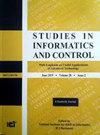An Optimization-based Time-optimal Velocity Planning for Autonomous Driving
IF 1.1
4区 计算机科学
Q4 AUTOMATION & CONTROL SYSTEMS
引用次数: 0
Abstract
: Velocity planning plays an important role in motion planning of automated driving as it must meet safety, comfort, and traffic regulation requirements. Therefore, it is necessary to consider Jerk constraint and dynamic obstacle constraint. However, the introduction of these constraints makes velocity planning a non-convex optimization problem, significantly increasing computational complexity. To address these challenges, this paper investigates an optimization-based time-optimal velocity planning method. The non-convex and non-linear problems caused by Jerk constraint and dynamic obstacle constraint are addressed by realizing constraint linearization through velocity filtering with acceleration as the threshold. The linear programming (LP) method is then used twice to calculate a time-optimal velocity profile that satisfies the given constraints. Furthermore, when hard constraints are unable to satisfy obstacle avoidance planning, a dynamic constraint frame strategy is proposed to relax the hard constraints and fully utilize the dynamic performance of the ego-vehicle to avoid obstacles. Finally, simulations are conducted in various driving scenarios to validate the effectiveness of the proposed approach. The simulation results demonstrate that the approach proposed in this paper can quickly generate velocity profiles that meet safety and comfort constraints, within a short planning period. Additionally, the dynamic constraint frame strategy can improve the dynamic adaptability of the基于优化的自动驾驶时间最优速度规划
本文章由计算机程序翻译,如有差异,请以英文原文为准。
求助全文
约1分钟内获得全文
求助全文
来源期刊

Studies in Informatics and Control
AUTOMATION & CONTROL SYSTEMS-OPERATIONS RESEARCH & MANAGEMENT SCIENCE
CiteScore
2.70
自引率
25.00%
发文量
34
审稿时长
>12 weeks
期刊介绍:
Studies in Informatics and Control journal provides important perspectives on topics relevant to Information Technology, with an emphasis on useful applications in the most important areas of IT.
This journal is aimed at advanced practitioners and researchers in the field of IT and welcomes original contributions from scholars and professionals worldwide.
SIC is published both in print and online by the National Institute for R&D in Informatics, ICI Bucharest. Abstracts, full text and graphics of all articles in the online version of SIC are identical to the print version of the Journal.
 求助内容:
求助内容: 应助结果提醒方式:
应助结果提醒方式:


